JUnit is a test automation framework for the Java programming language. JUnit is often used for unit testing, and is one of the xUnit frameworks.

Jakarta EE, formerly Java Platform, Enterprise Edition and Java 2 Platform, Enterprise Edition (J2EE), is a set of specifications, extending Java SE with specifications for enterprise features such as distributed computing and web services. Jakarta EE applications are run on reference runtimes, which can be microservices or application servers, which handle transactions, security, scalability, concurrency and management of the components they are deploying.
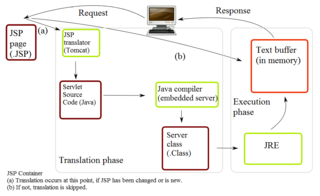
A Jakarta Servlet, formerly Java Servlet is a Java software component that extends the capabilities of a server. Although servlets can respond to many types of requests, they most commonly implement web containers for hosting web applications on web servers and thus qualify as a server-side servlet web API. Such web servlets are the Java counterpart to other dynamic web content technologies such as PHP and ASP.NET.
The Jakarta Project created and maintained open source software for the Java platform. It operated as an umbrella project under the auspices of the Apache Software Foundation, and all Jakarta products are released under the Apache License. As of December 21, 2011 the Jakarta project was retired because no subprojects were remaining.
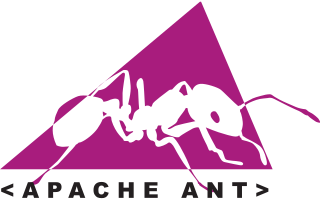
Apache Ant is a software tool for automating software build processes for Java applications which originated from the Apache Tomcat project in early 2000 as a replacement for the Make build tool of Unix. It is similar to Make, but is implemented using the Java language and requires the Java platform. Unlike Make, which uses the Makefile format, Ant uses XML to describe the code build process and its dependencies.
Hibernate ORM is an object–relational mapping tool for the Java programming language. It provides a framework for mapping an object-oriented domain model to a relational database. Hibernate handles object–relational impedance mismatch problems by replacing direct, persistent database accesses with high-level object handling functions.
Maven is a build automation tool used primarily for Java projects. Maven can also be used to build and manage projects written in C#, Ruby, Scala, and other languages. The Maven project is hosted by The Apache Software Foundation, where it was formerly part of the Jakarta Project.

Apache Tapestry is an open-source component-oriented Java web application framework conceptually similar to JavaServer Faces and Apache Wicket. Tapestry was created by Howard Lewis Ship, and was adopted by the Apache Software Foundation as a top-level project in 2006.
Seasar2 is an open-source application framework similar to the Spring Framework (Java). Initially, it was developed for the Java platform by Yasuo Higa, but .NET and PHP platforms are currently supported as well. Seasar2 has a large base of Japanese users, but there is a steady increase of non-Japanese users since English support was announced at the JavaOne 2005 Tokyo conference.
The Spring Framework is an application framework and inversion of control container for the Java platform. The framework's core features can be used by any Java application, but there are extensions for building web applications on top of the Java EE platform. The framework does not impose any specific programming model.. The framework has become popular in the Java community as an addition to the Enterprise JavaBeans (EJB) model. The Spring Framework is free and open source software.
Grails is an open source web application framework that uses the Apache Groovy programming language. It is intended to be a high-productivity framework by following the "coding by convention" paradigm, providing a stand-alone development environment and hiding much of the configuration detail from the developer.
Apache CXF is an open source software project developing a Web services framework. It originated as the combination of Celtix developed by IONA Technologies and XFire developed by a team hosted at the now defunct host CodeHaus in 2006. These two projects were combined at the Apache Software Foundation. The name "CXF" was derived by combining "Celtix" and "XFire".
Java view technologies and frameworks are web-based software libraries that provide the user interface, or "view-layer", of Java web applications. Such application frameworks are used for defining web pages and handling the HTTP requests (clicks) generated by those web pages. As a sub-category of web frameworks, view-layer frameworks often overlap to varying degrees with web frameworks that provide other functionality for Java web applications.
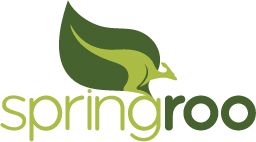
Spring Roo is an open-source software tool that uses convention-over-configuration principles to provide rapid application development of Java-based enterprise software. The resulting applications use common Java technologies such as Spring Framework, Java Persistence API, Thymeleaf, Apache Maven and AspectJ. Spring Roo is a member of the Spring portfolio of projects.
Virgo is an open source, OSGi-based, Java application server. Virgo supports the deployment of OSGi bundles and unmodified Java web applications as well as OSGi-influenced Shared Libraries WARs and Shared Services WARs.
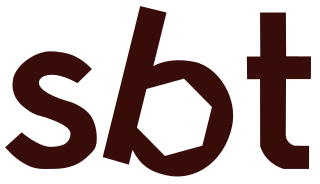
sbt is an open-source build tool which can build Java, Scala, and Kotlin projects. It aims to streamline the procedure of constructing, compiling, testing, and packaging applications, libraries, and frameworks. sbt is highly adaptable, permitting developers to customize the build process according to their project's specific needs.
Java code coverage tools are of two types: first, tools that add statements to the Java source code and require its recompilation. Second, tools that instrument the bytecode, either before or during execution. The goal is to find out which parts of the code are tested by registering the lines of code executed when running a test.
Apache Struts 2 is an open-source web application framework for developing Java EE web applications. It uses and extends the Java Servlet API to encourage developers to adopt a model–view–controller (MVC) architecture. The WebWork framework spun off from Apache Struts 1 aiming to offer enhancements and refinements while retaining the same general architecture of the original Struts framework. In December 2005, it was announced that WebWork 2.2 was adopted as Apache Struts 2, which reached its first full release in February 2007.
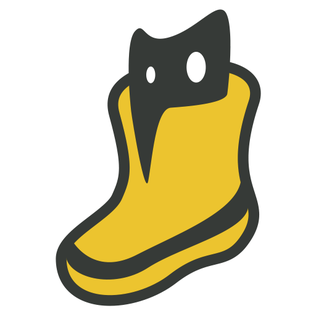
Boot is a build automation and dependency management tool written primarily in the Clojure programming language.








